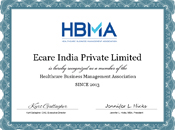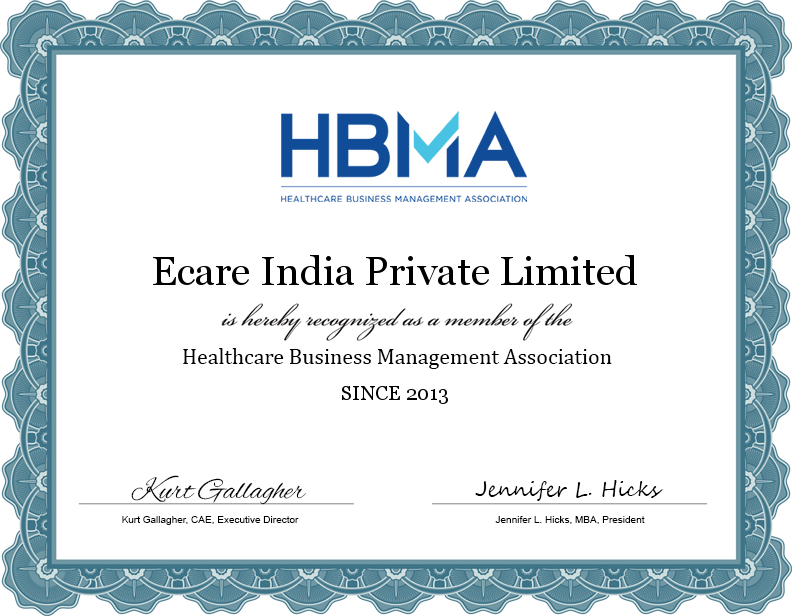Frequently Asked Questions
Asking - The best way to know
FAQ
ecareRCM suite is a one stop shop that provides complete revenue cycle management solutions along with several other ancillary services that are optional to clients. Every step in the RCM process requires proper coordination and effective follow-up which means missing out in a single step can be a threat to the revenue cycle. When the service provider handles the complete RCM process, coordination between various billing departments becomes simplified which will facilitate efficient planning, faster communication, minimized errors and timely delivery of services assuring incremental revenue to the clients. This also ensures effective cost savings in administrative costs as well. That’s why opting for ecareRCM suite can be very profitable to the clients
How do you handle rush hour projects given by clients?
Handling rush hour projects is not new in healthcare billing. What makes the difference is the way the projects are handled. Providing error free deliverables within the deadline is important. We have sufficient skilled resources to handle urgent deliverables. Moreover, we are flexible to our clients’ requirements and if necessary, we can employ more experts to work on rush hour projects and finish it on time.
How fast can the clients expect revenue enhancement after handing over the project to ecare India?
At ecare, we work on schedules as agreed by our clients. We first work on analyzing our clients’ account, account specific rules and the software setup which will help us in understanding the business requirements and determining the skilled force to be allocated for the project. Once we start with the project, we streamline the total setup and start the RCM process while working on improving our clients’ revenue. Based on our past experience, our clients have seen improvement in their accounts within 60-90 days from the time they started working with ecare. Reading our case studies and testimonials can give a clear idea on how we handle our clients’ accounts.
What is Medical Coding?
Medical Coding is assigning codes to diagnoses and procedures as a part of the medical billing process which helps in financial reimbursement from insurance companies.
Why is Medical Coding Done?
The purpose of medical coding is to provide a uniform language that accurately describes medical, surgical and diagnostic services - serving as an effective means for reliable nationwide communication among physicians, patients and third parties. Medical Coding aids in identifying the claims and displays the entire history of the patient and the services performed.
Coders convert the physicians note into codes that is utilized by the insurance providers (Carriers) in
compensating the health care provider.
What is an AAPC Certification in Medical Coding?
This field generates medical coders who specialize in coding after a thorough training program and a certification process. The American Academy of Professional Coders (AAPC) is a privately-held company that certifies medical coders in the United States and in other countries such as India. The AAPC certifies medical coders, giving them the credentials certain employers, physicians and
government organizations prefer them to have.
Are coders at ecare AAPC certified?
Both AAPC certified and non-AAPC coders work at ecare India. All our coders are well experienced and are capable of delivering quality work.
What is ICD and CPT Coding?
ICD means International Statistical Classifications of Diseases. ICD codes are identities given to every diagnoses & symptoms that occur to human beings. These classifications are developed, monitored and copyrighted by the World Health Organization (WHO). In the United States, the NCHS (National Center for Health Statistics), part of CMS (Centers for Medicare and Medicaid Services) oversees all changes and modifications to the ICD codes, in cooperation with WHO CPT (Current Procedural Terminology) codes are numbers assigned to services rendered by medical practitioners to patients including medical, surgical and diagnostic services. Their usage facilitates insurers to determine the amount of reimbursement that a practitioner will receive for these services. CPT codes are developed, maintained and copyrighted by the AMA (American Medical Association)
How do your coders update themselves with latest changes in the industry?
We keep our coders informed on the latest changes in the medical billing domain and provide them periodical training sessions. Moreover our coders have enrolled in appropriate websites that publish latest updates and they are active participants in healthcare webinars as well.
What are the most common reasons for a denial of a claim by the insurance companies?
1) Incorrect insurance information furnished by the patient in the Doctor’s office.
2) Incomplete information given in the claim form by the Medical Biller, like incomplete ID #, incorrect patient name etc.
3) Insurance policy of the patient terminated or not effective on the date the services were provided and the updated information is not available with the billing office.
4) The Medical Billing Company files the claim with a wrong insurance company.
5) Wrong Procedure codes used to bill the claim.
6) Incorrect Procedure-diagnosis combination
What are the ways to handle/avoid a denial?
On coverage related denials, we should research to see if there are other claims paid for the same patient from the same insurance carrier. Also an eligibility check to determine the effective dates of the insurance policy should be done. If necessary, a call to the patient can also be done to obtain the correct insurance coverage or send a letter or statement to the patient indicating his/her responsibility on the claim. If the correct insurance information is obtained either through patient calling or through eligibility checks, the new information should be incorporated in the billing software and the affected claims should be refilled to the correct insurance.
In order to minimize coverage related denials in the future, accurate and complete insurance coverage information should be obtained from the patients at the time of visits to the doctor and for established patients the existing information on file should be validated with them. Alternatively eligibility and benefits verification can be done before the patient’s treatment every time.
What procedure do you follow in case of Non-payments arising from an insurance carrier?
Non-payments by insurance companies may arise due to several reasons, one of them being claims not received by them. Our team of highly skilled professionals analyze several areas in the patient account and billing software to establish the root cause of non-receipt of claims. The first check would be the claims mailing address of the insurance carriers to which the claims are to be sent. Then the transmission reports are verified to determine if the claim in question has been acknowledged by the insurance company or not or if there are any rejections during transmission which have been overlooked. Further if necessary the master files are also thoroughly researched to ensure everything is in place. Our goal is not to just resubmit a claim that is not received and close the job but to determine the root cause to ensure future claims reach the insurance company properly.
How do you work on aged AR?
We ensure that follow-up calls are made on the aged AR with in 45 days from the date of transmission of the claims. We also ensure that for every batch of claims transmitted to the insurance company we get confirmation of receipt of claims thus ensuring that no transaction gets rejected at the carrier's end.
What is credentialing?
It is a process by which insurance carriers and hospitals verify the credentials of the medical provider. This includes verification of licenses, verification of malpractice insurance, verification of college degrees and background checks to ensure that the provider is fully capable to provide services and does not have any adverse actions or convictions in his service history.
Why is credentialing important? Who is it important to?
It is important for the provider to maintain his credibility with the insurance carriers and to hopefully receive a contract to participate in the an insurance companies’ various programs. This is critical to a medical provider due to the fact that most of us want to see a doctor in our network as it creates a savings for us with our medical expenses. Most out of network benefits require us, the patient, to meet a deductible before any payments to the provider of services are made.
How does credentialing help the medical provider?
Once a medical provider is credentialed and accepted into an insurance plan, their information is then posted in the provider directory. If a patient is looking for a medical provider in their network, they usually search by zip code. If a medical provider is not listed in that directory, the medical provider has missed the opportunity to get a new patient. Therefore, credentialing in a sense is a marketing tool as well.
How does a medical provider go about the process of credentialing?
Credentialing is an extremely time consuming process and requires an individuals' undivided attention. Current documents must be attached to a standard application which should be type written for legibility. Documents include licenses, diplomas, resumes, and declaration pages of the current malpractice. A cover letter should accompany the application and documents, introducing the provider to the carrier or hospital. Most providers prefer using an outside service for this process.
What is a PECOS ENROLMENT?
In this technology era, we have several processes that are being converted from paper to electronic. This is one such process. All provider enrolment applications for Medicare are built in this online tool. It is important for any physician/provider to be enrolled in this Provider Enrolment Chain and Ownership System (PECOS). The deadline for completing this process for all physicians other than DME and Home Health suppliers is 1-5-2011.
How long does it take to be credentialed?
Most carriers take from 90-180 days to complete their credentialing process. Once the provider is credentialed, the application goes before a committee for final acceptance into an insurance plan.
How will the provider know if they are accepted into a plan?
Most carriers inform the provider via letter. Another method is by tracking your application which requires someone to contact the carrier every couple of weeks to check the status of the application.
We at ecare India keep track of all applications from the time it is submitted to the carriers to the time the enrolment is complete by doing consistent follow ups with the insurance carriers and reporting such statuses to the providers.
How can insurance verification help reducing the AR days?
Many claims get rejected due to improper or non verification of insurance. This results in delay, rework and even non- payment while affecting the AR days. When insurance verification is performed systematically, it assures processing of clean claims which has very high possibility of acceptance at the first submission, which reduces the turnaround time and improves the AR days.
Will the patients be often contacted in the insurance verification process?
No. The patients are contacted only when it is essential to get information from them.
Do you stay updated with the changing insurance plans and regulations?
At ecare, we understand the importance of keeping pace with the enhancements and changes in the healthcare regulations and insurance policies. Therefore, we regularly check for the latest updates.
What is the Process of Indexing?
Scanning Medical Records
Accessing the scanned documents
Indexing Patient Folders.
Quality Check to Ensure Accuracy and Precision in Indexing
About Outsourcing
Our Expertise
Affiliation
A Proud Member of HBMA


